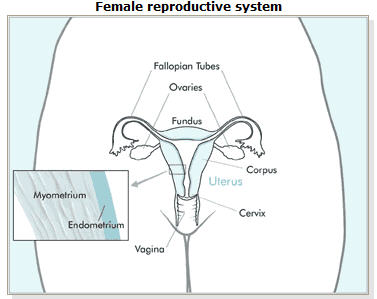Hysterectomy
Hysterectomies are among the most common surgical procedures give to women: 600,000 a year are performed in the USA alone. But, are these operations necessary, or simply the easiest option to offer?
A hysterectomy is a surgical procedure in which a surgeon removes some or all of a woman’s reproductive organs. You probably have friends who have had a hysterectomy, but would you know what to do if your doctor recommended one for you? First, the majority of hysterectomies are unnecessary. For example, they are commonly recommended to cure heave periods, fibroids, endometriosis, prolapsed, and pelvic inflammatory disease (PID) – all of which can often be well treated using the natural approach and other forms of conventional medicine. A hysterectomy does provide a permanent solution to all of these problems – but, unless you have uterine or ovarian cancer, or you have given birth and this has led to complications, it’s not always the only solution.
Please consider all the alternatives before you make the radical step of having some or all of your reproductive organs removed. Ask your doctor for justifications, alternatives, and consequences. Ask for a second, third, and fourth opinion. Ask yourself questions, see below, too. Don’t’ take anything at face value and take your time until you’re convinced that a hysterectomy is the right choice for you. In most cases, there’s no immediate hurry to make a decision.
Your Decision Checklist
Ask yourself the following questions. If you answer no to any, could it be time to reconsider?
- Have I had my last child?
- Do my symptoms affect my daily life?
- Have I tried all the natural alternatives?
- Am I ready to deal with the symptoms of sudden, early menopause?
- Is my life at risk without this procedure?

About the Procedure
A hysterectomy is major surgery that requires a lengthy stay in the hospital, incisions, general anaesthetic, and painful days and weeks afterwards. It can also trigger sudden and unexpected physical, sexual, and psychological changes. You’ll no longer be able to have children. If you have your ovaries removed (and sometimes even if you don’t), you’ll have to deal overnight with the symptoms of menopause. You may also experience urinary incontinence and weight gain. All these changes are the result of declining estrogen levels.
If a hysterectomy is the option that’s right for you, consider what type you should have. The following are the four types of surgery available. As a rule of thumb, try to have as little removed as possible.
Sub-total abdominal hysterectomy
This represents the least invasive version of a hysterectomy, as it removes only your uterus, allowing you to keep the rest of your reproductive organs. As your cervix is left in place, you’ll have a reduced risk of vaginal prolapsed (here the inside of the vagina moves outside the body – sort of turning itself inside out). Intercourse is likely to continue to be pleasurable.
Total abdominal hysterectomy
For this type of hysterectomy, surgeons remove both your uterus and cervix. It will take you at least three months to recover. The surgery may make it harder for you to reach orgasm. As your cervix is removed during this procedure, you won’t need to continue to have Pap smears, and you’re less likely to get any immediate menopausal symptoms because your ovaries will have been left intact.
Total abdominal hysterectomy with bilateral salpingo-oophorectomy
In this technical sounding version of the abdominal hysterectomy, you’ll have not only your uterus and cervix removed, but your ovaries and Fallopian tubes, too. If you hadn’t already reached menopause, you’ll be given hormone replacement therapy (HRT) immediately after your operation, and you’ll need to take it in the long term. This is because removing your ovaries plunges you suddenly into menopause. So, the younger you are when you have the surgery, the longer you’ll have to take HRT. You should expect to stay on HRT until you’re around 50 years old.
Radical abdominal hysterectomy
The most extensive form of hysterectomy, this removes not only all your reproductive organs, but also your cervix, the tissue at the top of your vagina and your pelvic lymph nodes. A doctor should offer it only to treat a condition such as cervical cancer. The surgery can damage your bladder, urinary tract, and bowels. You’ll need at least three months to recover.
Non-surgical procedures
Some kinds of hysterectomy can be performed without the need to make an incision in your abdomen.
Vaginal hysterectomy Unless your uterus is large, your surgeon may be able to remove your uterus and cervix through an incision inside your vagina, rather than in your abdomen. The procedure and recovery time are quicker than in abdominal hysterectomy.
Laparascopically assisted vaginal hysterectomy In this highly complex procedure, a kehhole surgeon uses a laparascope to look into your pelvic cavity and then cuts away your uterus and cervicx, removing them through your vagina.

